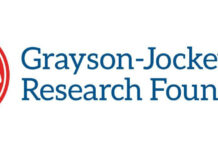
You’ve just tucked a couple of month’s supply of hay into your barn—or maybe an entire season’s worth—and now it’s time to get acquainted with it. You made sure it was green and attractive, fresh-smelling and free of mold. You’ve stored it under cover and away from the incursion of any damaging moisture. Now you’re ready to find out what it offers your horse in the way of nutritional value.
Hay analysis gives you the starting point from which to evaluate and balance your horse’s whole diet. If you purchase at least two or more months’ worth of hay at a time, it is worth having it analyzed. Your local county extension service may offer analysis services, or consider sending a sample to Equi-Analytical Laboratories (www.equi-analytical.com). Follow their directions for selecting and submitting samples.
What does the hay analysis tell you? Typically, it will return the following information:
Crude protein (CP): An estimation of total protein based on the amount of nitrogen in the hay. It does not tell you anything about the amino acid composition or the protein quality. To create a high quality protein, one that will help your horse maintain and repair tissue, combine a grass hay with a lesser amount of a legume (typically alfalfa). Most grass hay contains 8 to 10% CP whereas legumes (e.g., alfalfa, clover, perennial peanut) can range from 17-20%. Grain hays (oat, rye) generally have a lower CP than grass hay.
Acid detergent fiber (ADF) and Neutral Detergent fiber (NDF): Both measure fibers (there are 5 types). Since fibers are digested by the microbes living in the hindgut (cecum and large colon), a healthy microbial population is important to allow your horse to derive calories from fiber. However, there is one type of fiber that is indigestible—lignin; the lignin ends up as manure. Lignin content increases as the plant matures. The higher these two values (ADF and NDF), the more lignin the hay contains, the less likely that your horse can thrive on this hay. The ideal ADF is less than 35%; ideal NDF is less than 45%. However, most hays have values 10 points or more higher than these desired levels. To compensate, more hay needs to be consumed. This can be easily solved by allowing your horse to have free access to hay 24 hours a day.
Non-Structural Carbohydrates (NSC): Total amount of sugar, starch, and fructan. To obtain %NSC, add together %WSC (water soluble carbohydrates) plus %Starch. If your horse needs to have a low sugar/low starch diet, the %NSC should be below 12%.
Water-soluble carbohydrates (WSC): Simple sugars and fructan levels. Simple sugars are digested in the foregut and raise insulin levels. Too much can lead to laminitis because of elevated blood insulin. Fructan for the most part is digested in the hind gut, though some shorter chain fructose molecules can contribute to elevated insulin. Too much fructan generally results in laminitis caused by endotoxins in the bloodstream.
Ethanol soluble carbohydrates (ESC): A subset of WSC that gives you a better idea of the simple sugar level. WSC minus ESC provides a fair measurement of fructan levels.
Starch: Normally digested in the foregut down to individual glucose (blood sugar) molecules; therefore, it has a strong elevating effect on blood insulin levels.
Minerals: Keep in mind that minerals interact with one another, interfering with absorption. Therefore be conservative when supplementing minerals if your hay is close to these ideal ratios.
- Calcium to phosphorus ratio—There needs to be more calcium than phosphorus in hay. Most hay (except orchardgrass) will have this balance. The ideal ratio is 2:1, but the level of calcium can be even higher and still be considered safe. Phosphorus concentration must never be higher than calcium levels.
- Calcium to magnesium ratio—Ideally, calcium content should not be more than twice that of magnesium. Most hays have a magnesium level that is lower than what horses ideally require. Furthermore, magnesium is not well absorbed, so supplementing may be suggested.
- Iron, Zinc, Copper, and Manganese—Ideal ratios are Iron:Copper — 4:1; Copper:Zinc:Manganese — 1:4:4.
- Selenium—This is worth analyzing, since selenium has a narrow range of safety (1 to 5 mg per day). Too little can be just as damaging as too much, so know your hay’s selenium level before you supplement.
Feeding your horse like a horse—the way nature intended—means feeding the most nutritious diet possible, including giving him hay free choice to mimic his natural grazing pattern. You’ll be more confident in feeding this way when you get to know your foundation element—the hay—through a laboratory analysis.
Further Reading
Choosing Good Hay
Hay Buying without the Hassle
Selecting the Right Hay for Your Horse
Juliet M. Getty, Ph.D. is an internationally respected equine nutritionist available for private consultations and speaking engagements. Visit www.gettyequinenutrition.com to sign up for Dr. Getty’s informative—and free—monthly newsletter, Forage for Thought, read articles and search her nutrition forum, and purchase previously recorded teleseminars in audio format or in print through the Spotlight series.







c
informative
Great advice. But really how much does it cost to analyze hay? It sounds expensive.
I agree, but unless, the horses look like they are not doing good.
Most horse owners, can not file taxes to deduct the cost.
Good reading, but I am sure it has a cost which most horse owners can not afford.
Did you know that if you’re a Purina customer they can sometimes help out with hay analysis? Your vet or the Purina rep can help you set this up.
Actually hay analysis is relatively inexpensive. I just had mine done for under $30.
You can then supplement as necessary based on the results.
http://www.equi-analytical.com/